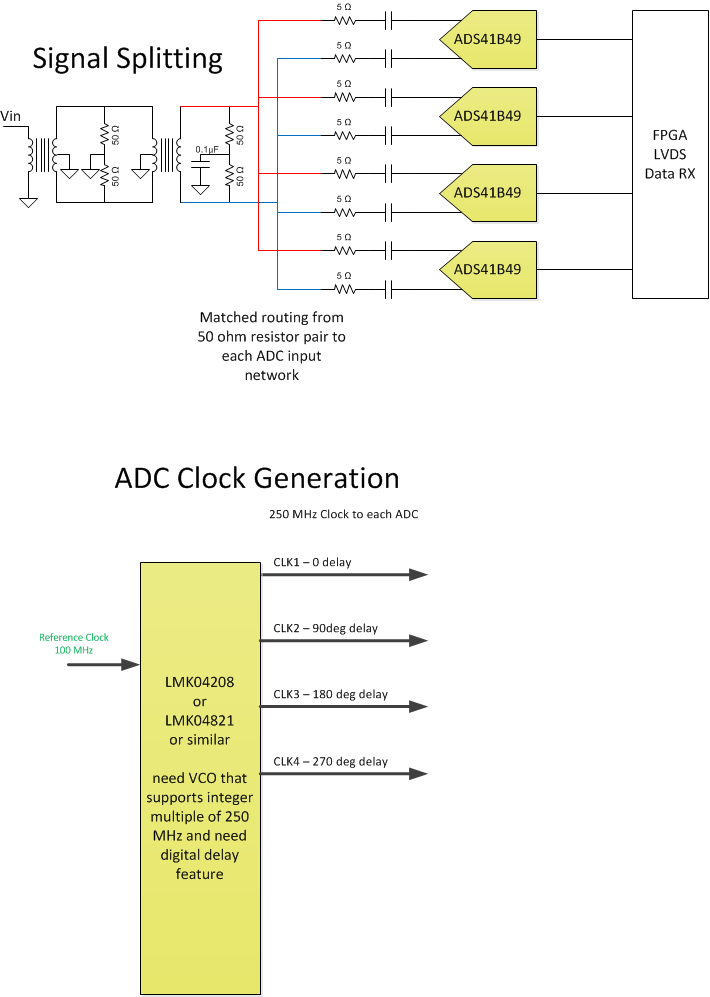Other Parts Discussed in Thread: ADS54J40, ADS54J40EVM, ADS54J60, ADS41B49, , LMK04821, LMK04208, LMK04828
Dear Specialists,
My customer is considering a system of 14 to 16 bits and 1Gsps.
I would be grateful if you could advise.
---
There is a demand for realization with a parallel ADC because there is a limitation in the production of the substrate.
I'd like to use Interleave like SLAU247, are there any reference designs that match the above conditions?

To realize 1 Gsps, I think that four 250 Msps devices will be used.
I would like you to propose it together with the A / D converter.
---
I appreciate your great help in advance.
Best regards,
Shinichi



